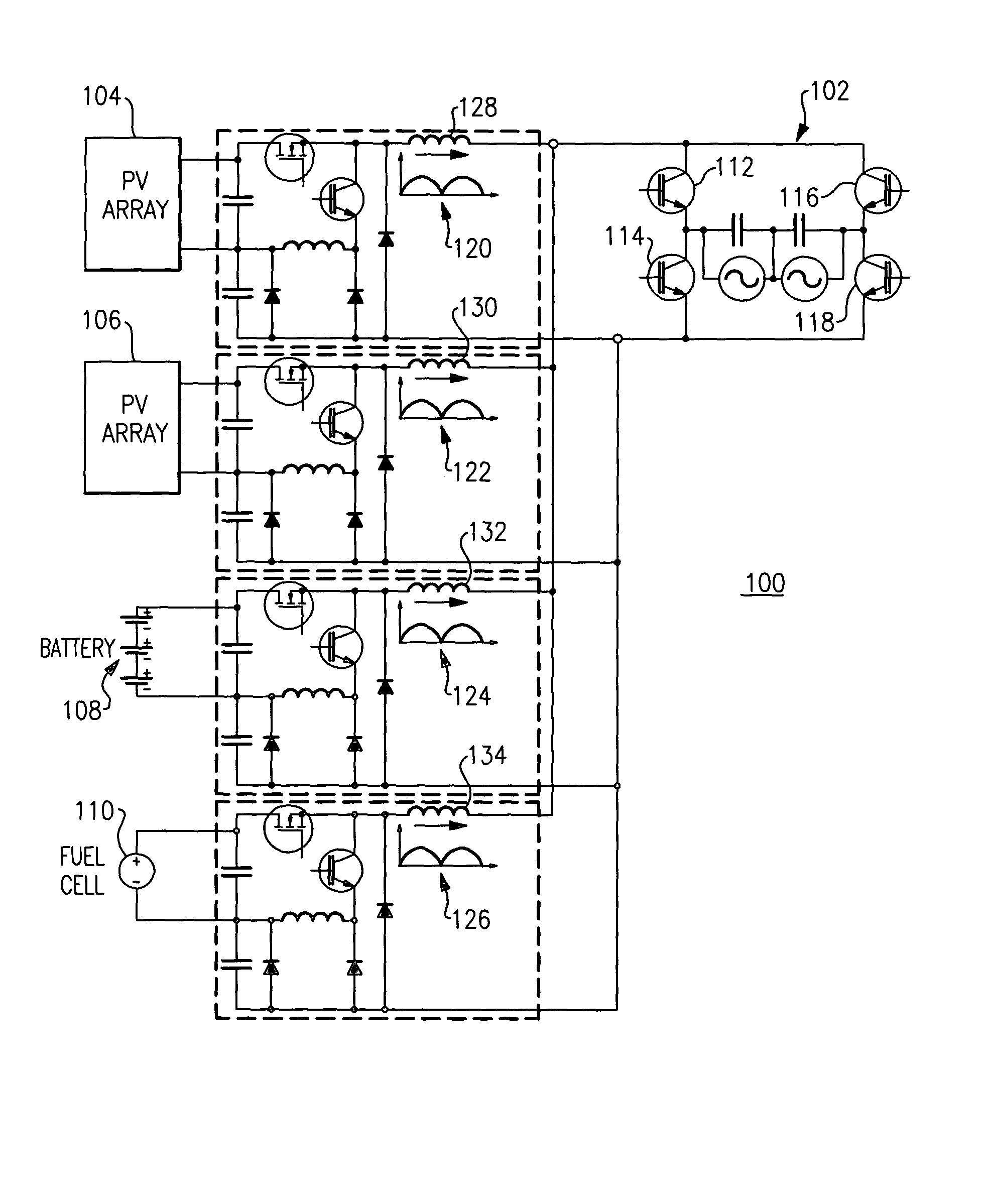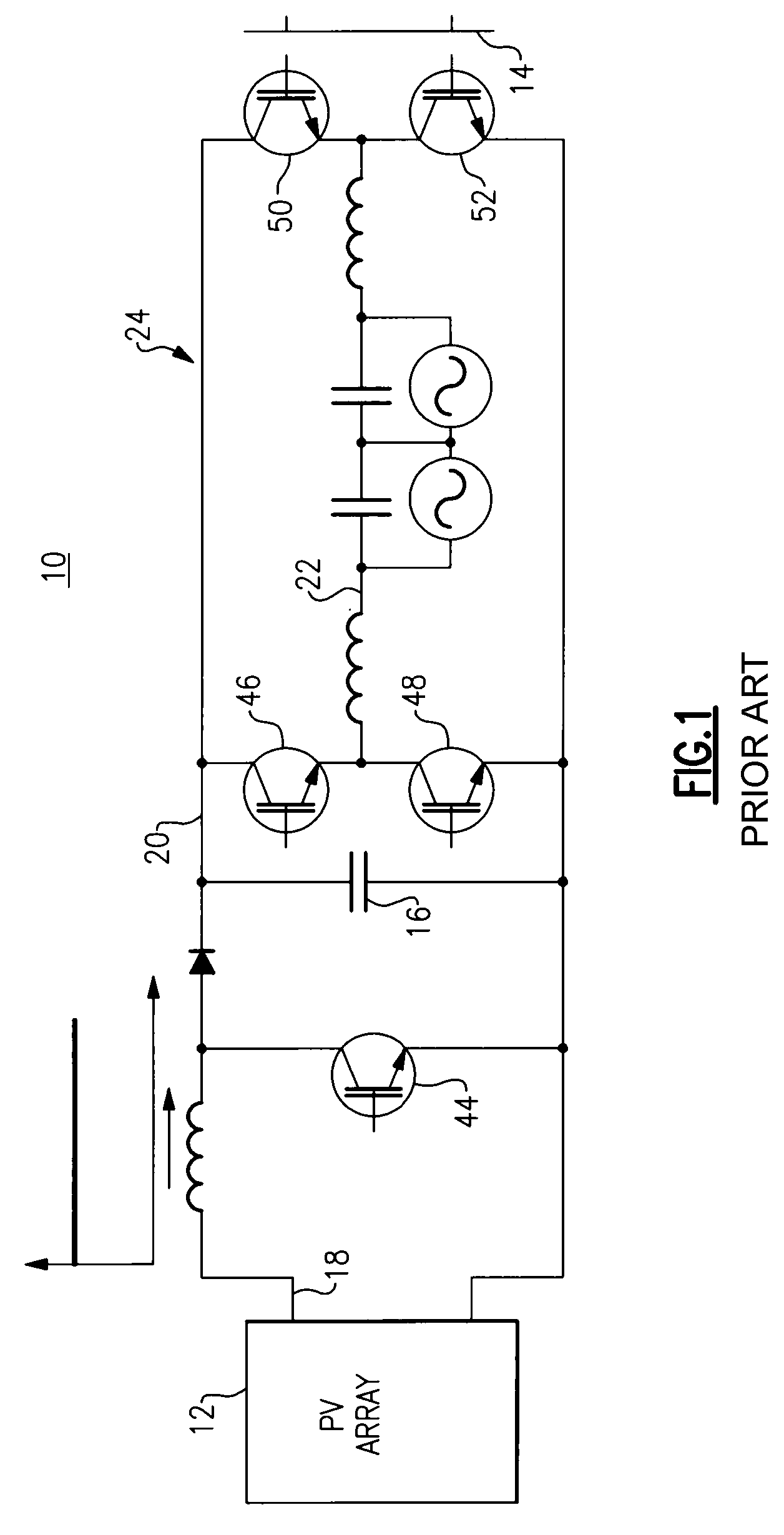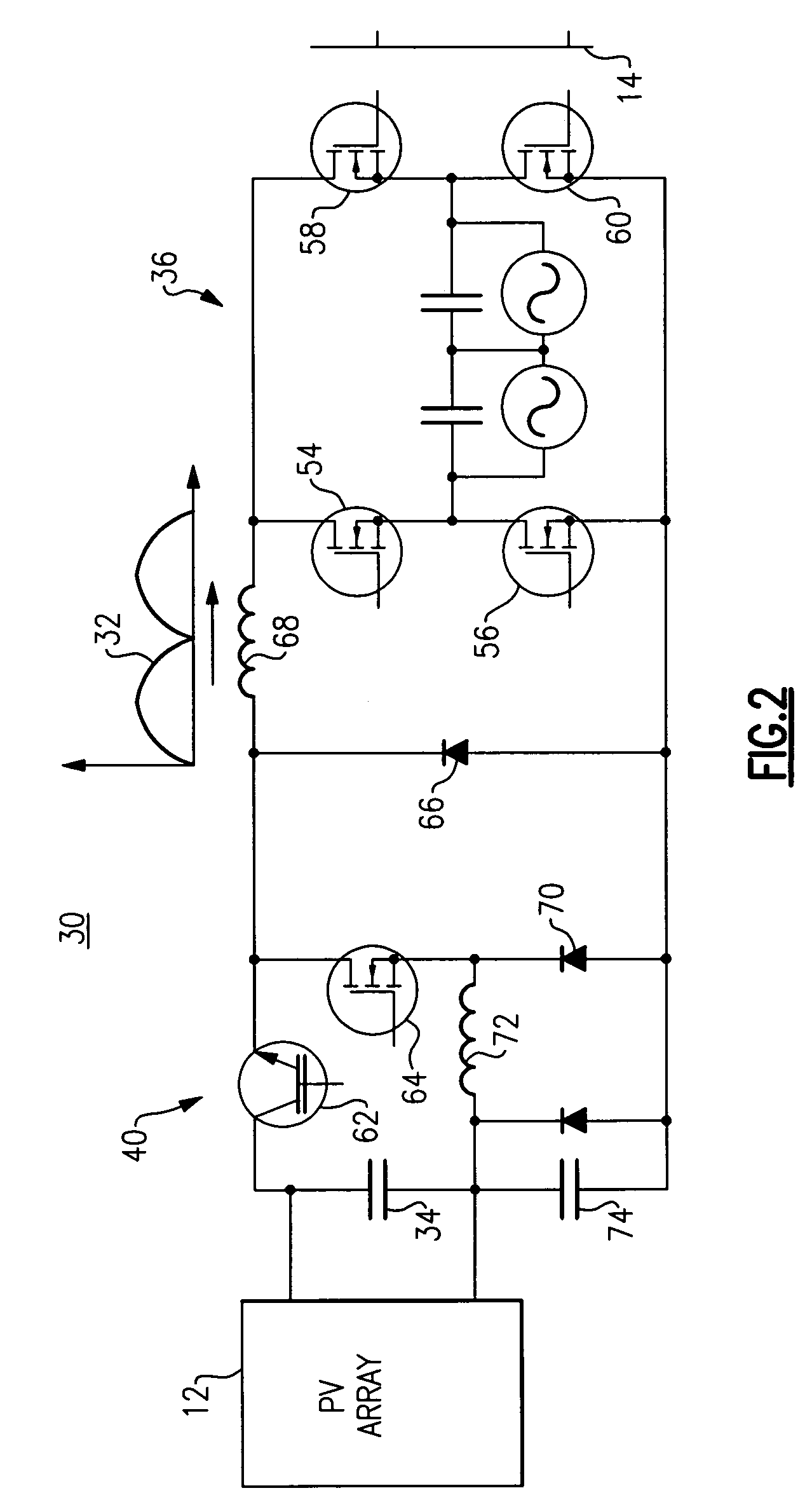High efficiency, multi-source photovoltaic inverter
a photovoltaic inverter, multi-source technology, applied in the direction of dc-ac conversion without reversal, efficient power electronics conversion, dc source parallel operation, etc., can solve the problems of overall switching loss, one-half system loss, undetected control of power circuit, etc., to increase the level of voltage sourcing
- Summary
- Abstract
- Description
- Claims
- Application Information
AI Technical Summary
Benefits of technology
Problems solved by technology
Method used
Image
Examples
Embodiment Construction
[0028]FIG. 1 is illustrates a photovoltaic inverter 10 topology that is known in the art. Photovoltaic inverter 10 employs a two-stage power circuit to convert a varying DC voltage of a PV array 12 to a fixed frequency AC current for a power grid 14. Photovoltaic inverter 10 uses a DC link capacitor 16 to implement the intermediate energy storage step. This means the PV inverter 10 first converts the unstable PV DC voltage 18 to a stable DC voltage 20 that is greater than the grid voltage via a boost converter, and subsequently converts the stable DC voltage 20 to a current 22 via a PWM circuit 24 that can then be injected into the grid 14. Photovoltaic inverter 10 topology employs five switching devices 44, 46, 48, 50, 52 that are all switching at a high frequency and that undesirably contribute to the overall switching losses of the two-stage converter.
[0029]FIG. 2 illustrates a photovoltaic inverter 30 hard-switching topology according to one embodiment of the invention. Photovol...
PUM
 Login to View More
Login to View More Abstract
Description
Claims
Application Information
 Login to View More
Login to View More - R&D
- Intellectual Property
- Life Sciences
- Materials
- Tech Scout
- Unparalleled Data Quality
- Higher Quality Content
- 60% Fewer Hallucinations
Browse by: Latest US Patents, China's latest patents, Technical Efficacy Thesaurus, Application Domain, Technology Topic, Popular Technical Reports.
© 2025 PatSnap. All rights reserved.Legal|Privacy policy|Modern Slavery Act Transparency Statement|Sitemap|About US| Contact US: help@patsnap.com



